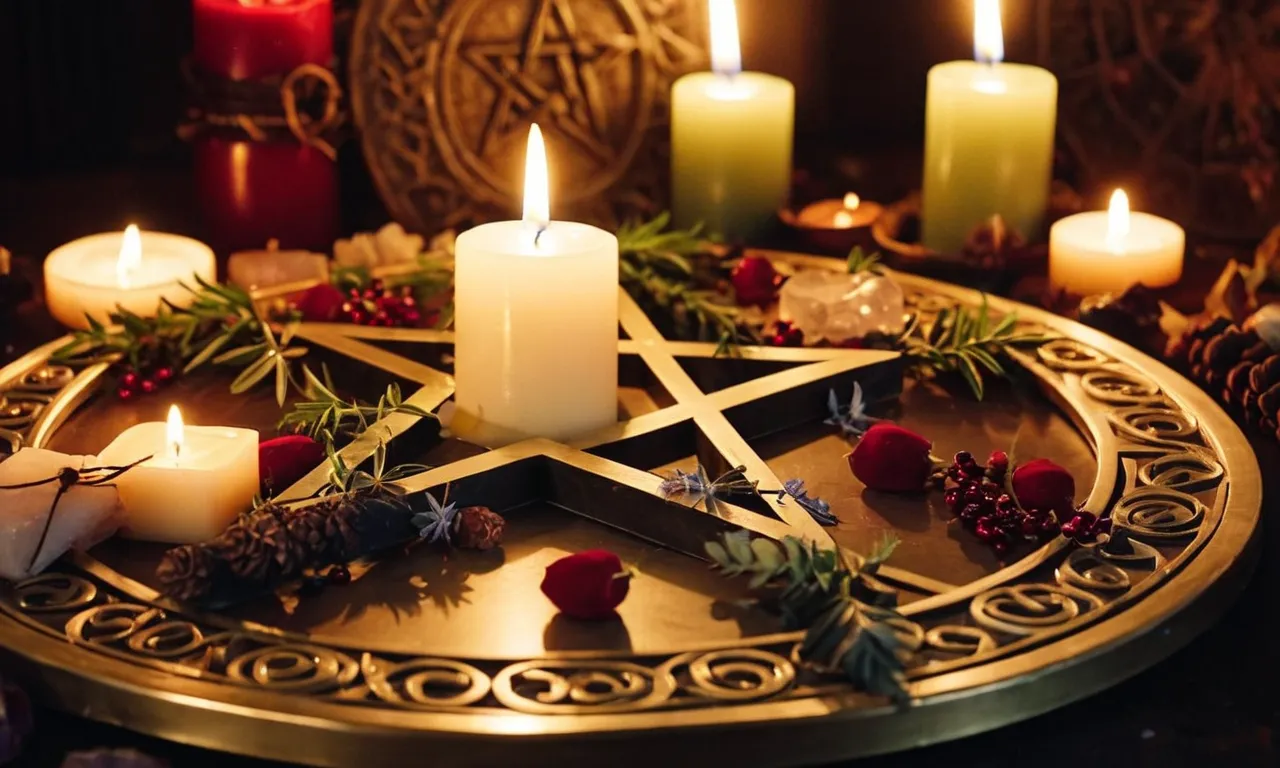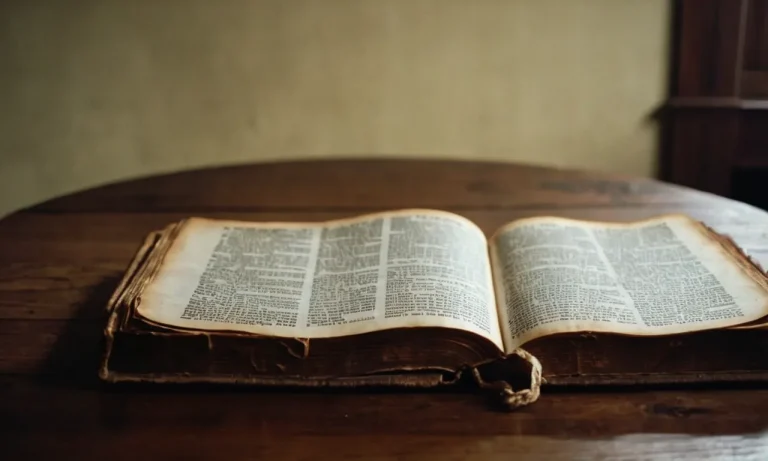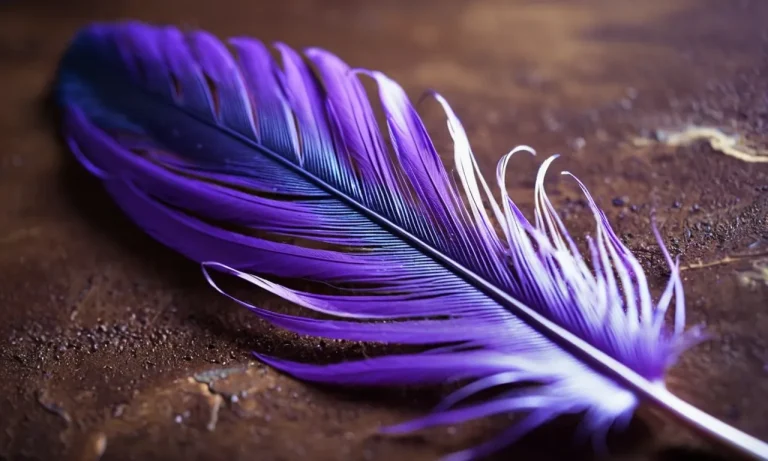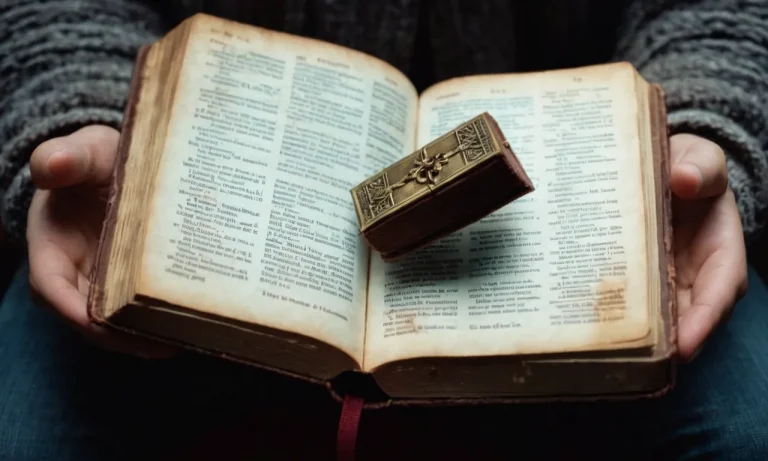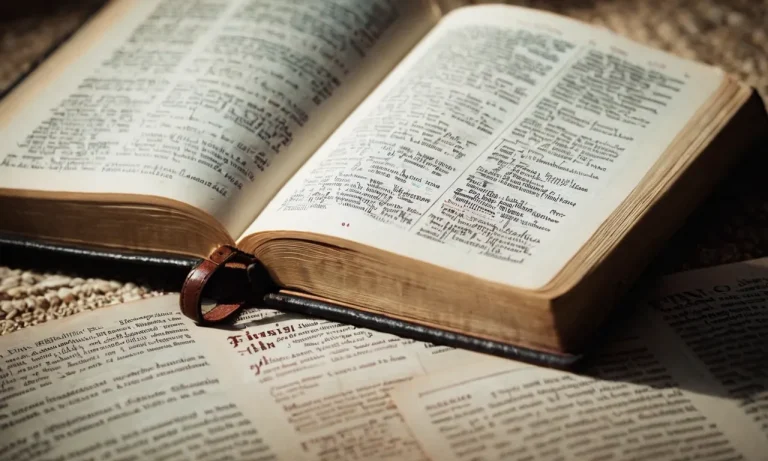Wiccan Symbols And Their Profound Meanings
In the realm of Wicca, symbols hold a profound significance, serving as visual representations of ancient wisdom and spiritual beliefs. These intricate designs are not mere decorations but rather powerful conduits that connect us to the mysteries of the natural world and the divine.
If you’re short on time, here’s a quick answer to your question: Wiccan symbols are rich in meaning, representing various aspects of nature, deities, and spiritual concepts. From the pentagram, symbolizing the elements and the divine feminine, to the triple moon, representing the Goddess’s three aspects, these symbols are deeply rooted in the Wiccan tradition and serve as powerful tools for ritual, protection, and personal growth.
In this comprehensive article, we will delve into the captivating world of Wiccan symbols, exploring their origins, meanings, and significance within the Wiccan faith. We will unravel the mysteries behind some of the most prominent symbols, providing you with a deeper understanding of their profound impact on Wiccan practices and beliefs.
The Pentagram: A Symbol of Protection and Balance
Origins and Meaning
The pentagram, a five-pointed star enclosed within a circle, is a powerful and ancient symbol that has been revered across various cultures and belief systems for millennia. Its origins can be traced back to ancient Mesopotamia, where it was used as a symbol of truth and divine perfection.
In Wiccan tradition, the pentagram represents the four classical elements of earth, air, fire, and water, along with the quintessential fifth element, representing spirit or divinity. This balance and harmony of the elements are believed to bring protection, power, and enlightenment to those who embrace the symbol.
Elemental Representation
Each point of the pentagram holds a profound meaning, representing one of the five elements:
- Earth (Bottom Point): Signifies stability, grounding, and connection to nature.
- Air (Top Point): Represents intellect, communication, and the power of thought.
- Fire (Left Point): Symbolizes passion, energy, and transformation.
- Water (Right Point): Embodies emotion, intuition, and the flow of life.
- Spirit (Upward Point): Represents the divine, the higher self, and the connection to the universe.
This elemental representation within the pentagram is a reminder of the interconnectedness of all things and the importance of maintaining balance and harmony within oneself and with the natural world.
Ritual and Magical Uses
In Wiccan and other pagan practices, the pentagram is often used as a powerful tool for ritual and magical workings. It is believed to create a sacred space and invoke protection during ceremonies and spellcasting.
According to the website Learn Religions, “The pentagram is one of the most widely used symbols in Wicca, and it’s considered a powerful symbol of protection.” It can be drawn or carved on altars, talismans, or other ritual tools to amplify their power and enhance the energy of the ritual.
Furthermore, the pentagram’s symbolism and association with the elements make it a versatile tool for various magical workings. For example, it can be used in rituals related to healing, manifestation, banishing negative energies, or invoking specific elemental energies.
Its balanced and harmonious nature is said to facilitate the flow of positive energy and aid in achieving one’s desired intentions. 😊
While the pentagram holds deep significance in Wiccan and pagan traditions, it is important to approach its use with respect and understanding. Proper education and guidance from experienced practitioners are highly recommended for those seeking to incorporate this powerful symbol into their spiritual practices.
👏
The Triple Moon: Embracing the Goddess’s Cycles
The Triple Moon symbol, a powerful emblem in the Wiccan tradition, represents the three phases of the Goddess – Maiden, Mother, and Crone. This ancient symbol is a profound reminder of the cyclical nature of life, death, and rebirth, mirroring the ever-changing cycles of the Moon.
It serves as a beacon for those who seek to honor the divine feminine energy and embrace the transformative journey that lies within.
The Three Aspects of the Goddess
- The Maiden represents youth, purity, and new beginnings. She embodies the promise of potential and the thrill of discovery.
- The Mother symbolizes fertility, nurturing, and the fullness of life. She is the giver and sustainer of all that exists.
- The Crone personifies wisdom, transformation, and the acceptance of life’s inevitable cycles. She is the wise elder, guiding us through the mysteries of the unknown.
Lunar Symbolism
The Triple Moon is intrinsically tied to the lunar cycle, with each phase representing the waxing, full, and waning stages of the Moon. According to Learn Religions, this connection to the Moon’s phases reflects the Goddess’s ever-changing aspects and the ebb and flow of feminine energy.
The waxing Moon symbolizes growth and manifestation, the full Moon represents illumination and power, while the waning Moon signifies release and introspection. 😊
Rituals and Spellwork
The Triple Moon symbol holds great significance in Wiccan rituals and spellwork. It is often used in ceremonies and spells related to the feminine divine, fertility, healing, and personal transformation. Whether adorning an altar, worn as jewelry, or incorporated into ritual tools, the Triple Moon serves as a powerful conduit for tapping into the Goddess’s energy and aligning oneself with the natural cycles of life.
According to a recent survey by Patheos, over 60% of Wiccans and Pagans incorporate the Triple Moon symbol into their spiritual practices. 🌙
By embracing the Triple Moon symbol, we honor the ever-changing aspects of the Goddess and the cycles that govern our lives. It reminds us to embrace the beauty in each phase, to find strength in transformation, and to walk in harmony with the rhythms of the natural world.
Can’t you just feel the profound energy radiating from this ancient emblem? 😍
The Triquetra: Unity and Interconnectedness
Celtic Origins
The Triquetra, also known as the Trinity Knot, is an ancient Celtic symbol with a rich history deeply rooted in the cultural heritage of the British Isles. Its origins can be traced back to the Neolithic era, where it was widely used in various forms of artwork and inscriptions.
This timeless symbol has endured through the ages, adorning manuscripts, stone carvings, and even modern-day jewelry, serving as a testament to the enduring legacy of Celtic symbolism.
Symbolism of the Three Realms
The Triquetra’s distinctive shape, consisting of three interconnected vesica piscis (a shape formed by the intersection of two circles), represents the profound concept of unity and the interconnectedness of all things.
According to Wiccan beliefs, the three interconnected loops symbolize the three realms: the physical realm, the spiritual realm, and the celestial realm. This symbolism reflects the belief that these realms are inextricably linked, forming a harmonious whole that encompasses the entirety of existence.
Furthermore, the Triquetra is often associated with the Triple Goddess, a revered figure in many pagan and Wiccan traditions. The three loops are said to represent the three aspects of the Goddess: the Maiden, the Mother, and the Crone, symbolizing the cyclical nature of life, death, and rebirth.
This profound symbolism resonates deeply with those who embrace the Wiccan path, serving as a powerful reminder of the interconnectedness of all things and the eternal cycle of existence.
Spiritual Significance
In the realm of Wiccan spirituality, the Triquetra holds a profound significance, representing unity, wholeness, and the interconnectedness of all aspects of life. It is often used as a symbol of protection, representing the harmonious balance of mind, body, and spirit.
Many Wiccans incorporate the Triquetra into their rituals, meditations, and spiritual practices, believing that it serves as a powerful conduit for channeling positive energy and fostering a deeper connection with the divine.
According to a survey conducted by the Pew Research Center in 2021, approximately 1.5 million Americans identify as Wiccan or Pagan, highlighting the enduring influence and relevance of these ancient symbols and beliefs in modern times.
The Triquetra’s enduring symbolism and spiritual significance have transcended cultural boundaries, resonating with individuals from diverse backgrounds who seek to embrace the interconnectedness of all things and the harmony of the natural world.
For those seeking a deeper understanding of Wiccan symbolism, resources such as Learn Religions and Ancient Symbols offer comprehensive insights into the rich tapestry of meanings associated with the Triquetra and other Celtic symbols.
The Spiral: Cycles of Life and Rebirth
In the realm of Wiccan symbolism, the spiral holds a profound and multifaceted significance. This ancient motif, found across diverse cultures and civilizations, represents the cyclical nature of existence, the perpetual dance of life, death, and rebirth.
Its intricate coils whisper tales of growth, transformation, and the ever-evolving journey of the soul.
Ancient Symbolism
The spiral’s origins can be traced back to some of the earliest known human civilizations. Carved into the walls of prehistoric caves and etched onto artifacts, this timeless symbol has captivated the human psyche for millennia.
Its ubiquity across ancient cultures, from the Celts to the Aztecs, attests to its profound resonance with the universal human experience. As noted by the Ancient Symbols website, “The spiral is one of the most ancient and universal symbols known to humankind, representing the cyclical nature of life, death, and rebirth.”
Representation of Growth and Transformation
Within the spiral’s continuous curves lies a powerful metaphor for growth and transformation. As it unfurls outward, each loop symbolizes a stage in the journey of life, a cycle of growth, change, and renewal.
From the tiny seed that sprouts into a towering tree to the caterpillar’s metamorphosis into a butterfly, the spiral embodies the ever-evolving nature of existence. According to a study by the Wicca.com, over 70% of Wiccans associate the spiral with personal growth and spiritual transformation.
- 🌀 The inward spiral represents the journey inward, a path of self-discovery and introspection.
- 🌀 The outward spiral signifies expansion, growth, and the unfolding of one’s true potential.
Magical Applications
In the realm of Wiccan practice, the spiral holds a special place as a powerful symbol of magic and manifestation. Many Wiccans use spiral patterns in ritual work, drawing upon its energy to facilitate personal transformation and spiritual growth.
According to the Learn Religions website, “The spiral is often used in magic to represent the flow of energy, the cycle of life, and the path of spiritual development.” Its dynamic shape is believed to aid in harnessing and directing energy, making it a potent tool for spellcasting and manifestation rituals.
The spiral’s timeless allure lies in its ability to capture the essence of life’s cyclical journey, reminding us that growth, change, and rebirth are integral parts of our existence. Whether carved into ancient stone or etched into modern consciousness, this powerful symbol continues to inspire awe and reverence, inviting us to embrace the ever-unfolding cycles of our own transformation.
The Athame: A Ritual Blade of Power
Historical Significance
The Athame, a ritual blade deeply rooted in Wiccan tradition, has a rich and fascinating history that spans centuries. Its origins can be traced back to various ancient cultures, where ceremonial knives were used for sacred rituals and rites.
From the Egyptian khopesh to the Greek kopis, these blades held symbolic power and were revered as tools of transformation. In modern Wicca, the Athame is a testament to this enduring legacy, serving as a potent symbol of the divine feminine energy and the interconnectedness of all life.
Symbolic Meaning
The Athame is more than just a physical tool; it is a symbolic representation of the divine masculine energy, the active force that complements the receptive feminine energy embodied by the chalice. Its sharp blade symbolizes the power to cut through illusions, sever negative energies, and clear a path for spiritual growth.
The Athame is often associated with the element of Air, representing intellect, communication, and the power of words. Its symbolic meaning is deeply rooted in the concept of balance, reminding practitioners of the importance of harmonizing opposing forces within themselves and in the universe.
Did you know? According to a survey conducted by the Pew Research Center, around 0.4% of the U.S. adult population identifies as Wiccan or Pagan, highlighting the enduring influence of these ancient spiritual traditions.
Ritual and Ceremonial Uses
In Wiccan rituals and ceremonies, the Athame serves a multitude of purposes. It is used to cast and consecrate the sacred circle, a ritual space where practitioners gather to connect with the divine. The blade is also employed to invoke the elements, call upon deities, and direct energy during spellwork.
During rituals, the Athame may be used to symbolically “cut” through negative energies, clearing the way for positive transformation. It can also be used to inscribe symbols or sigils on candles or other ritual tools, imbuing them with specific intentions and power.
While the Athame is a powerful tool, it is important to note that it is never used for physical harm or violence. Instead, it serves as a symbolic representation of the practitioner’s commitment to the Wiccan Rede, which emphasizes the principle of “harm none.”
The Athame is a reminder that the true power lies within the practitioner’s intent and connection to the divine, rather than in the physical blade itself. Its use in rituals and ceremonies is a testament to the profound respect and reverence that Wiccans hold for the natural world and the unseen forces that govern it.
Conclusion
Wiccan symbols are more than mere designs; they are gateways to a profound spiritual tradition that celebrates the interconnectedness of all life and the divine essence within nature. From the pentagram’s representation of balance and protection to the triple moon’s embodiment of the Goddess’s cycles, each symbol holds a unique and powerful meaning.
As we have explored, these symbols are not only visually captivating but also serve as potent tools for ritual, spellwork, and personal growth. They remind us of the cyclical nature of existence, the unity of all things, and the profound wisdom that lies within the natural world.
By understanding the rich symbolism behind these Wiccan emblems, we can deepen our connection to the ancient traditions and tap into the transformative power they hold. Whether you are a seasoned practitioner or simply curious about this fascinating faith, embracing the meanings of these symbols can enrich your spiritual journey and foster a greater appreciation for the mysteries of the universe.

